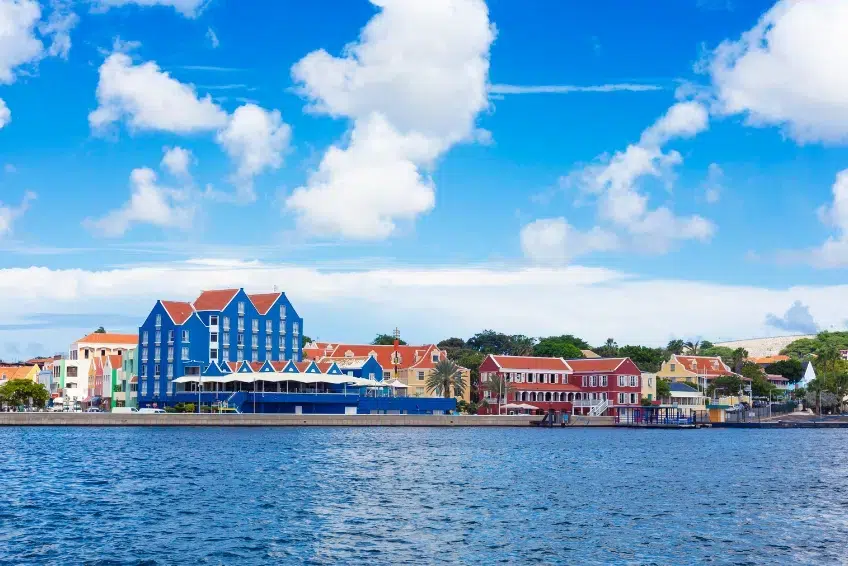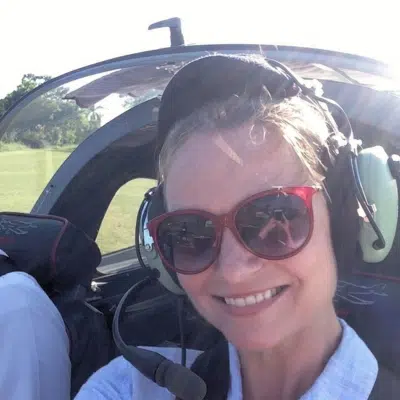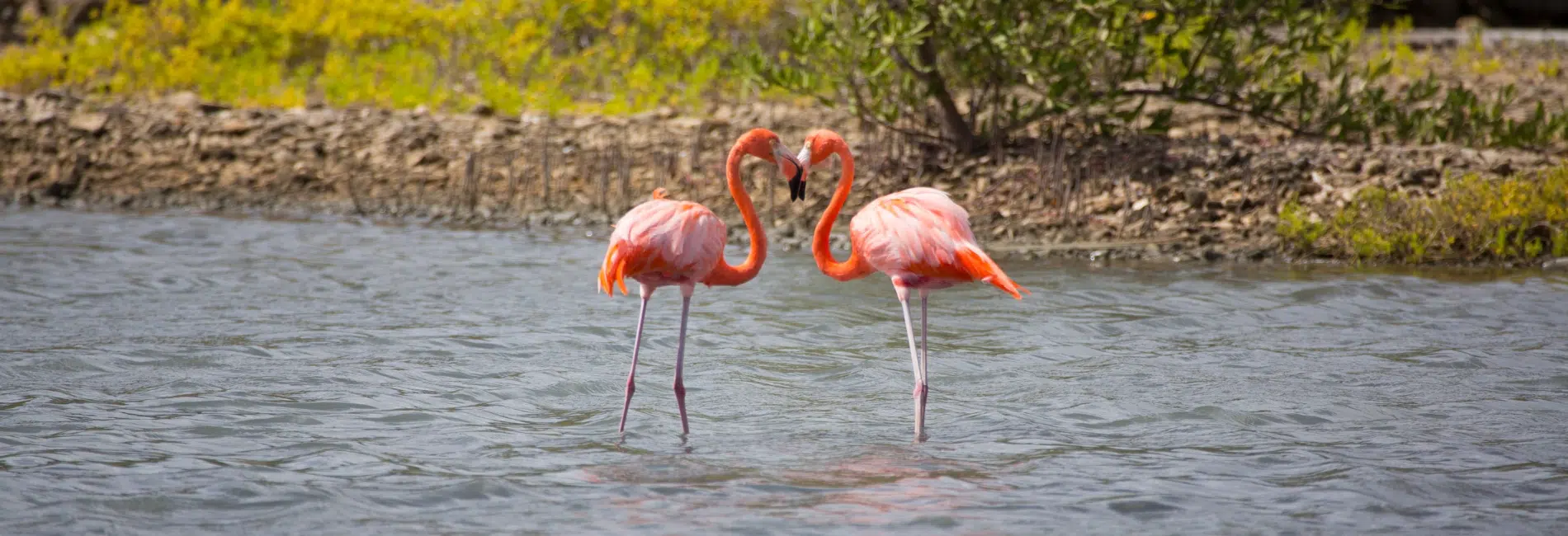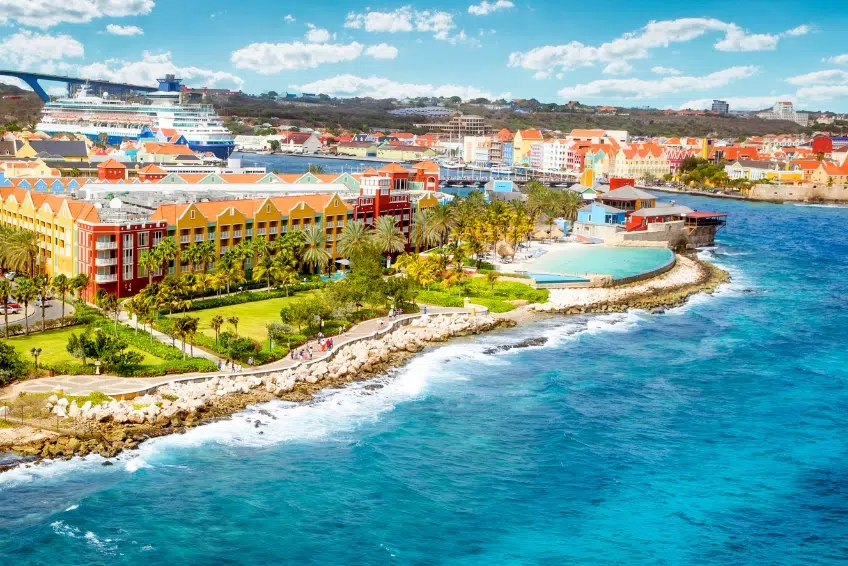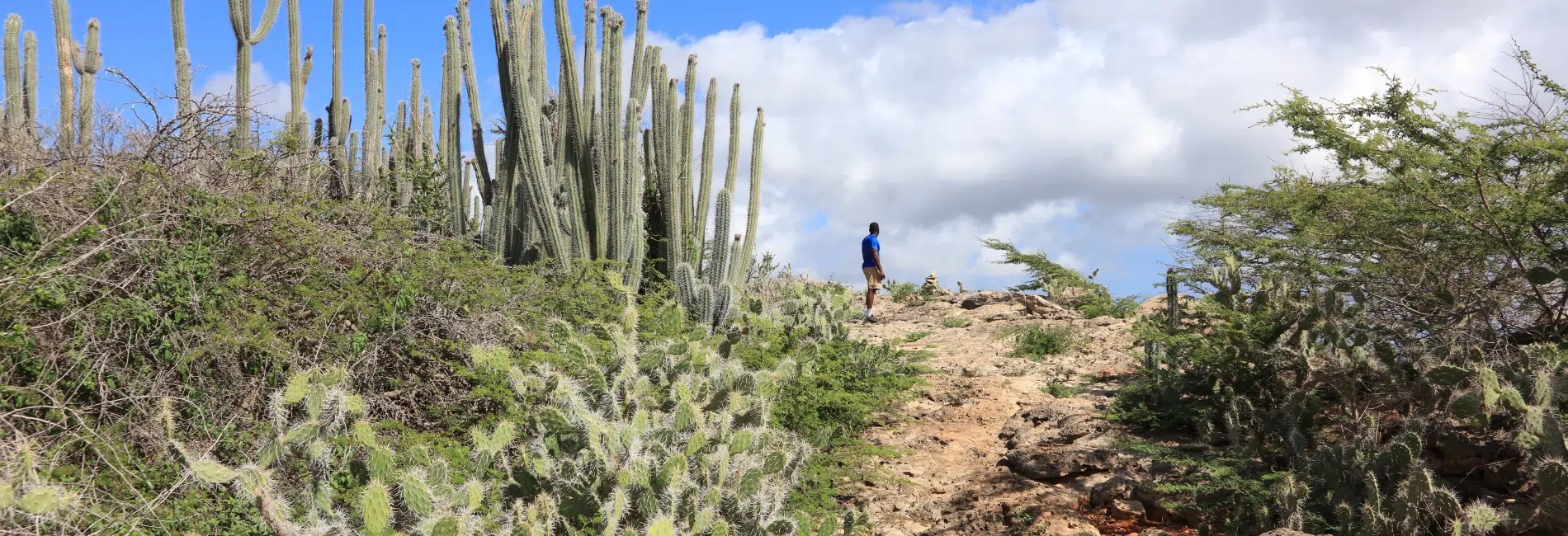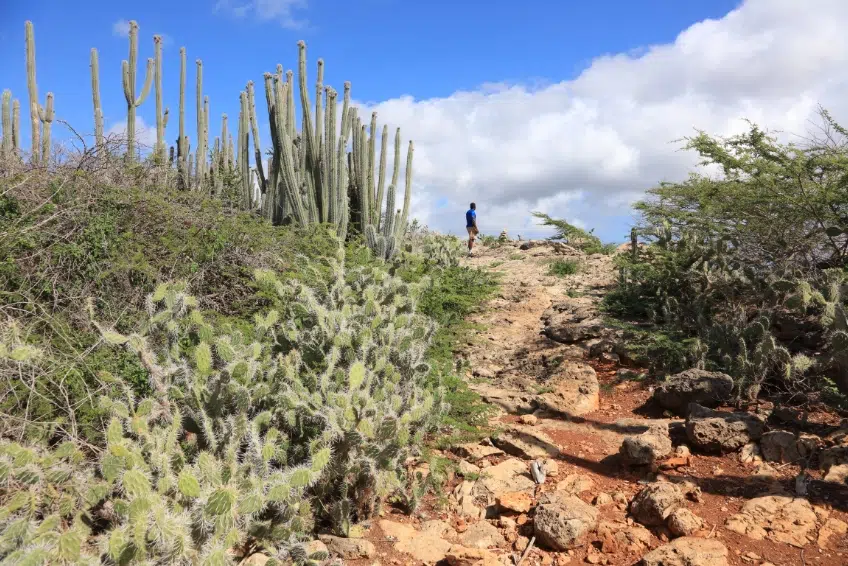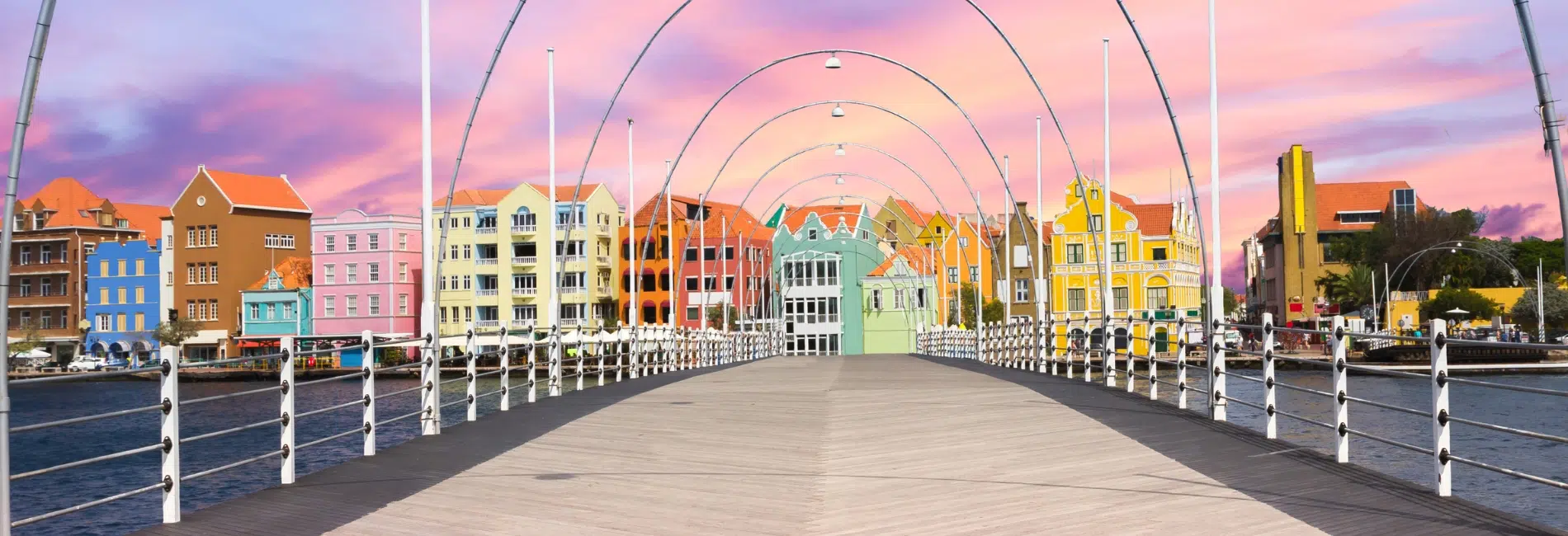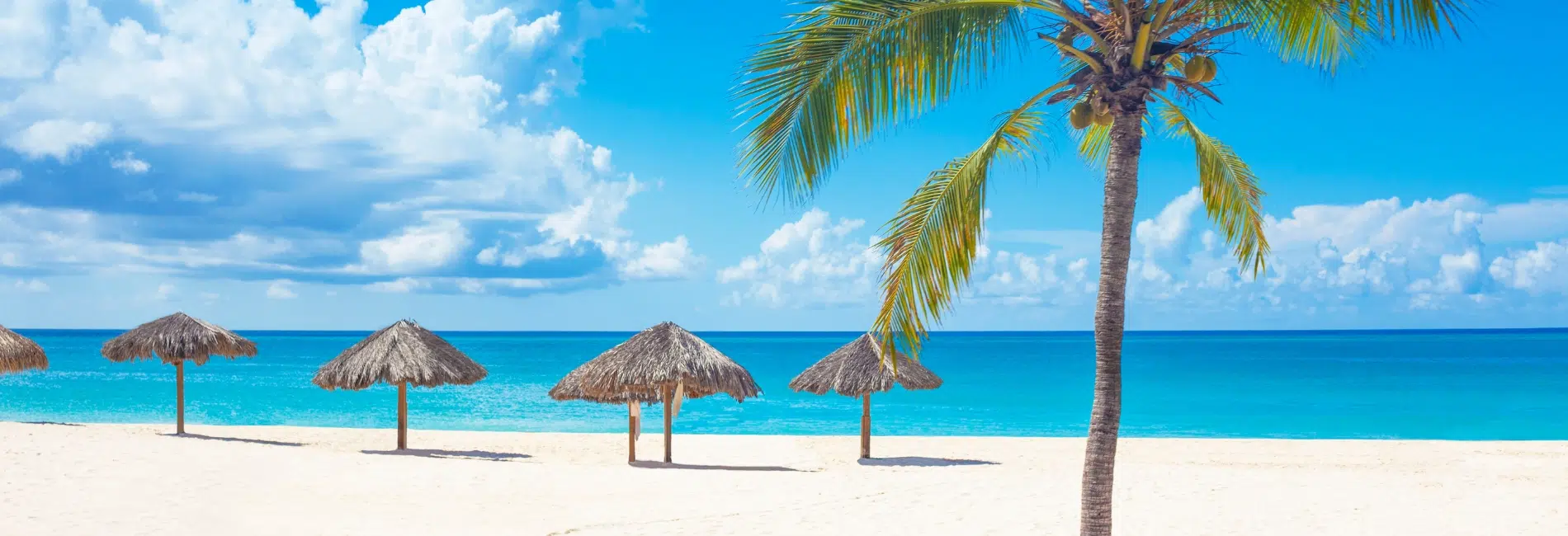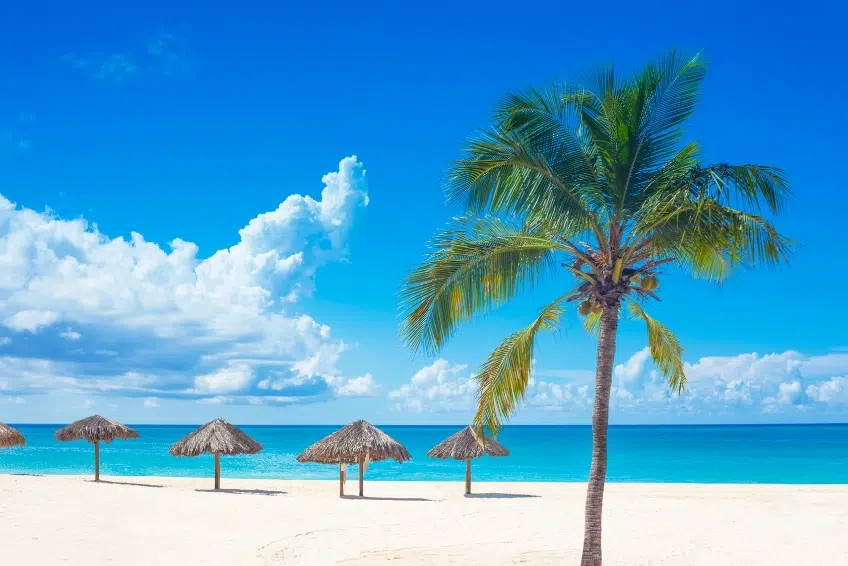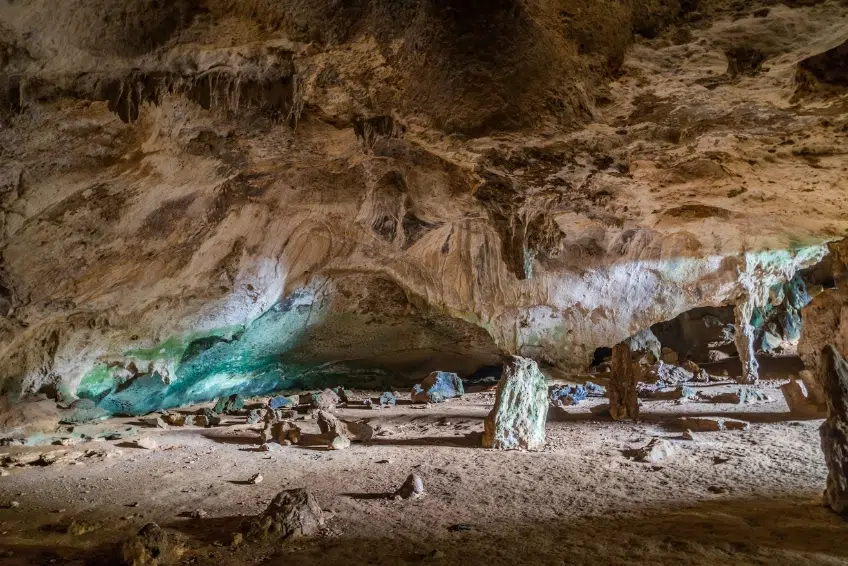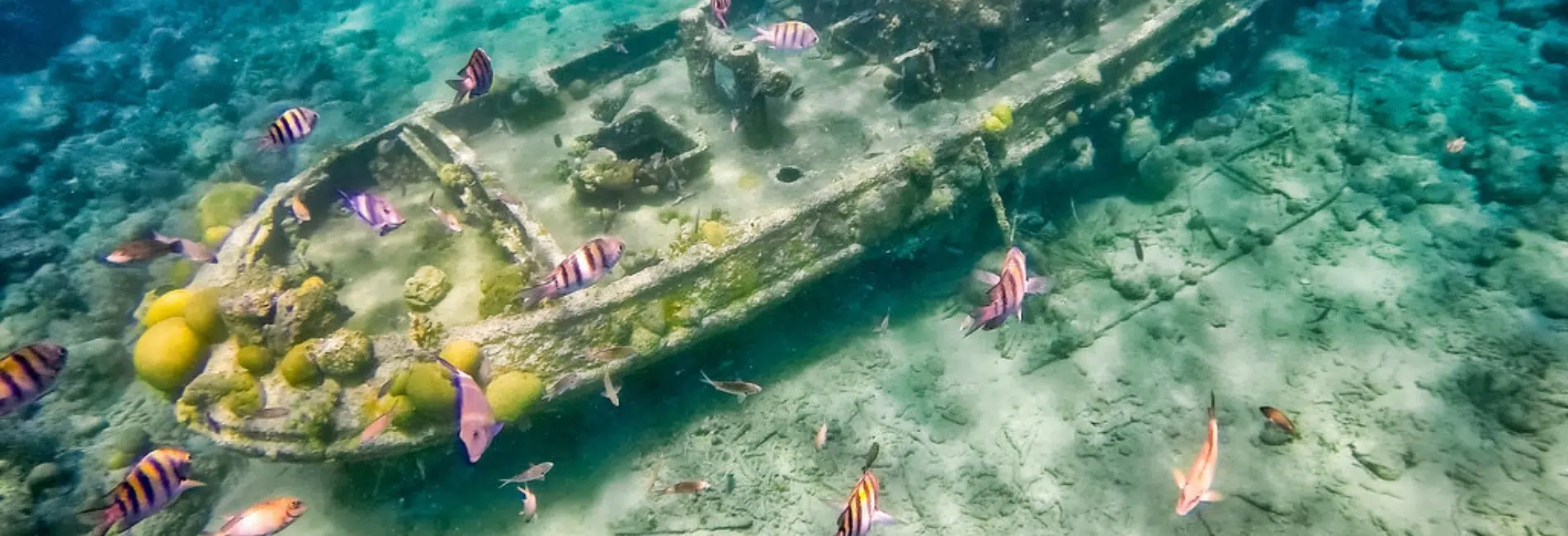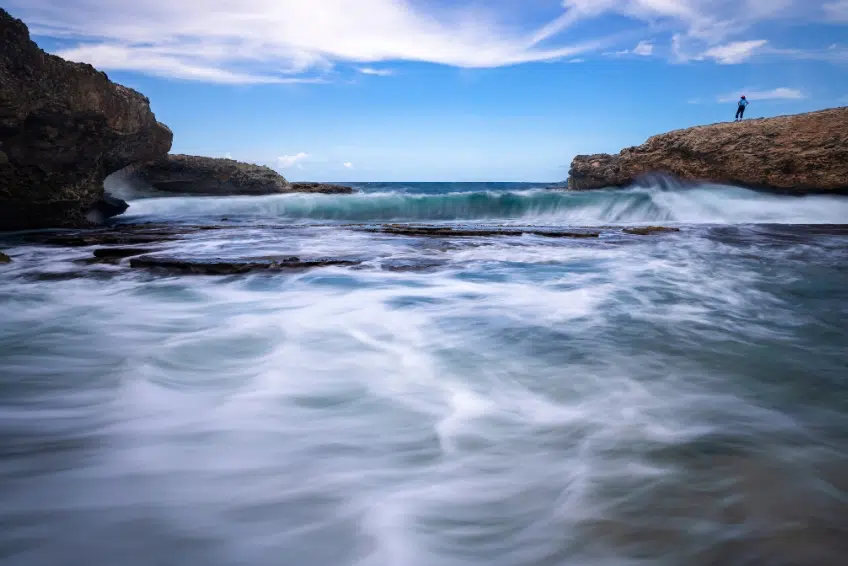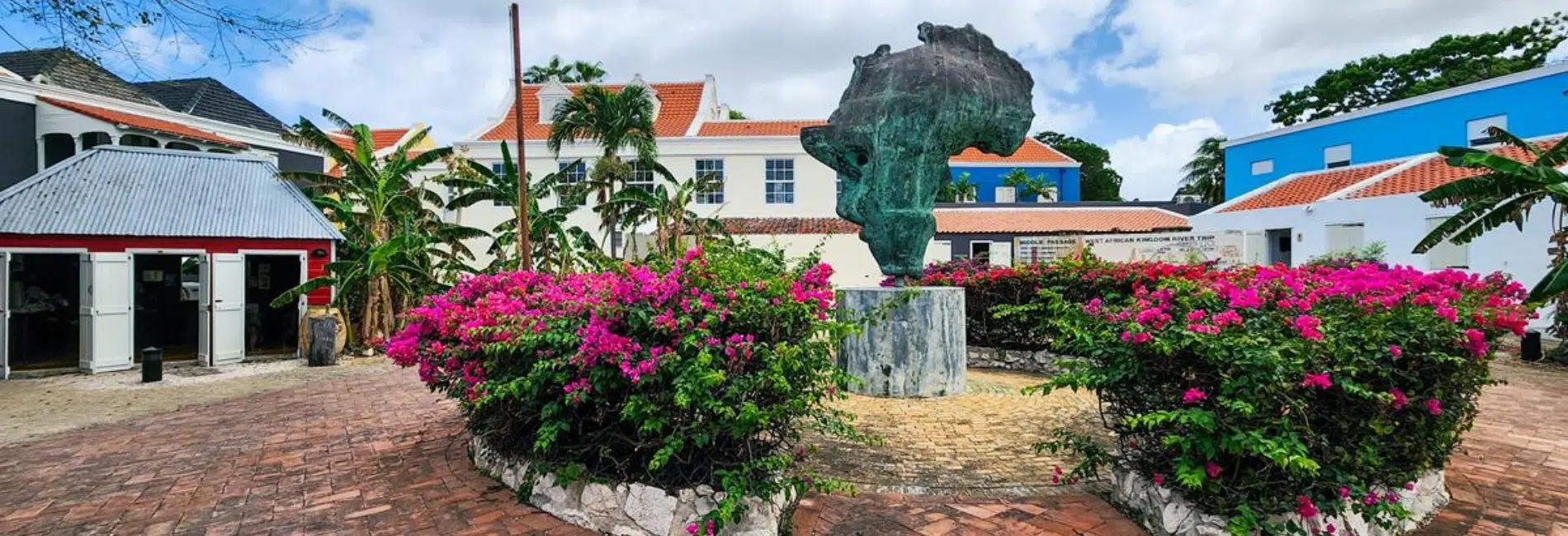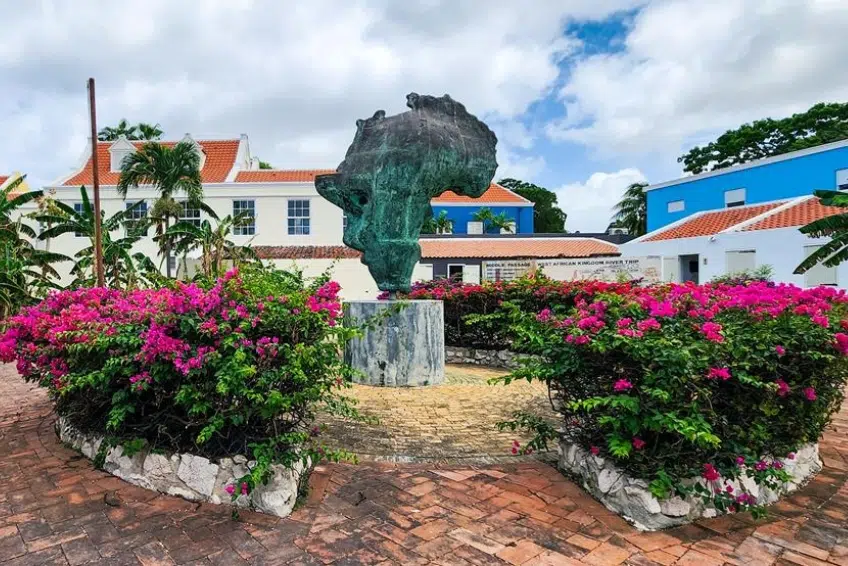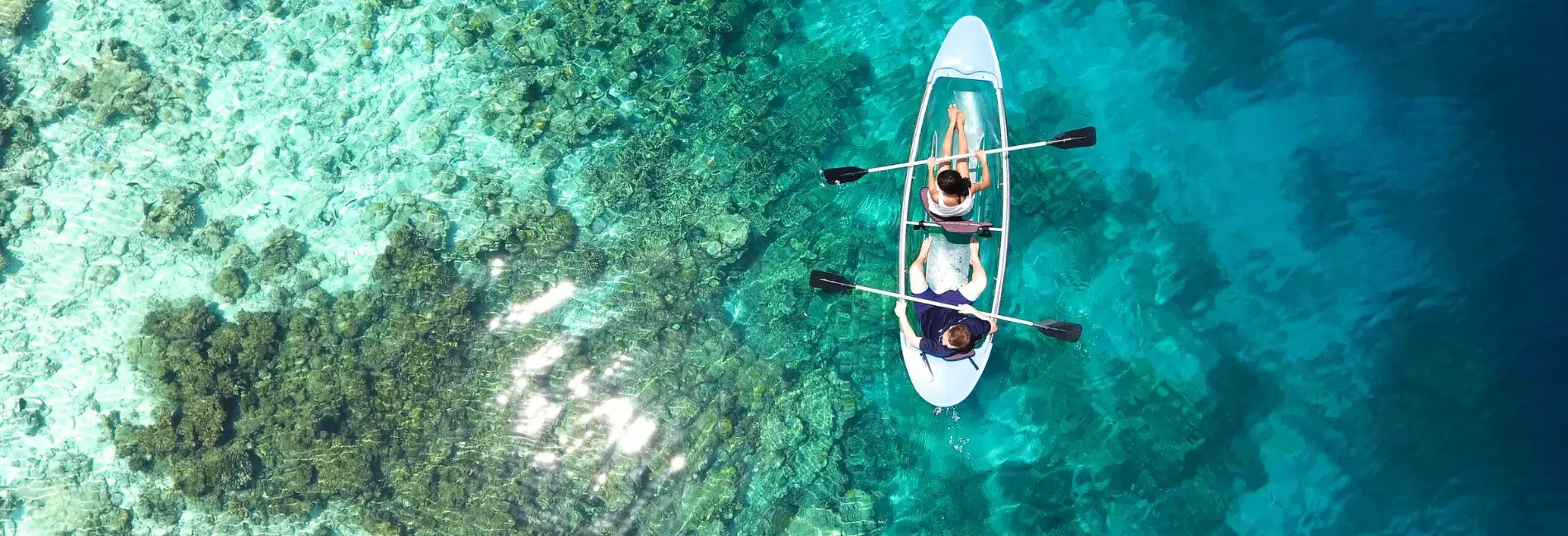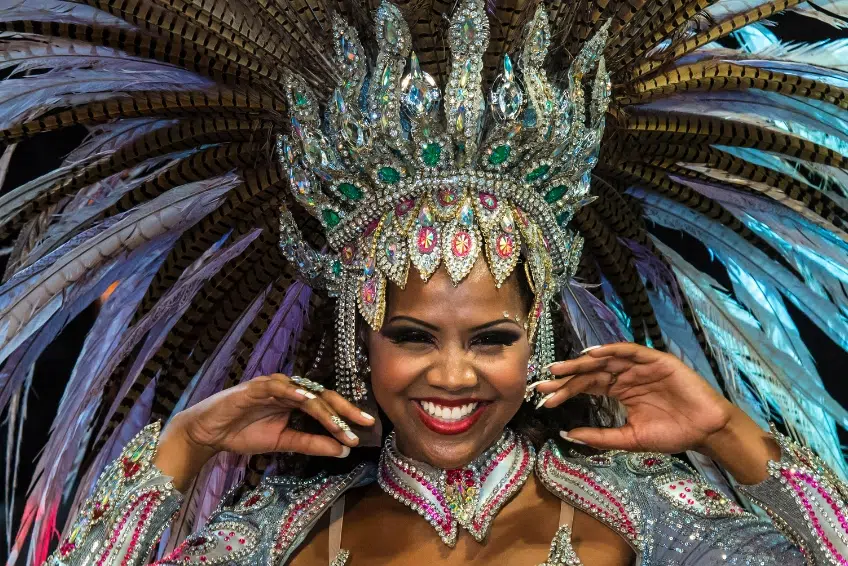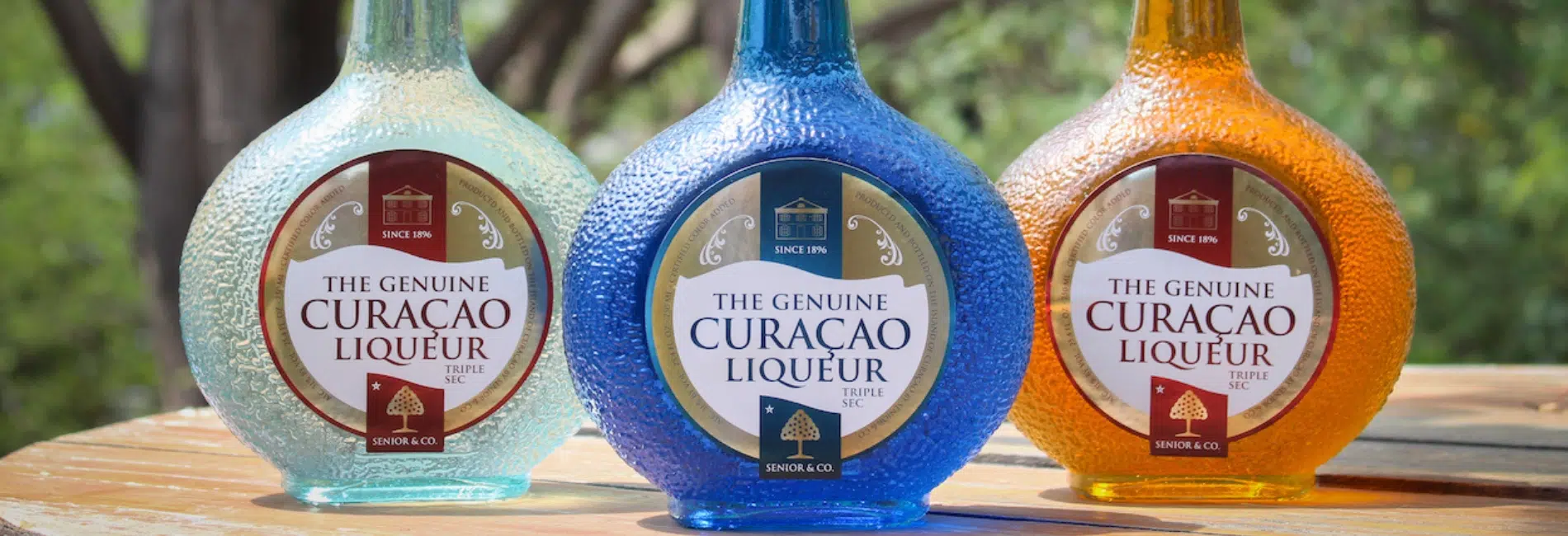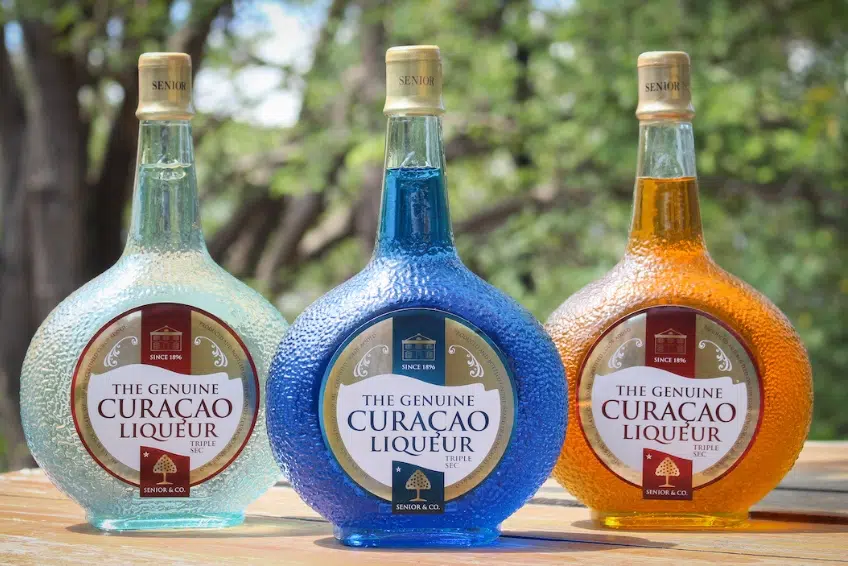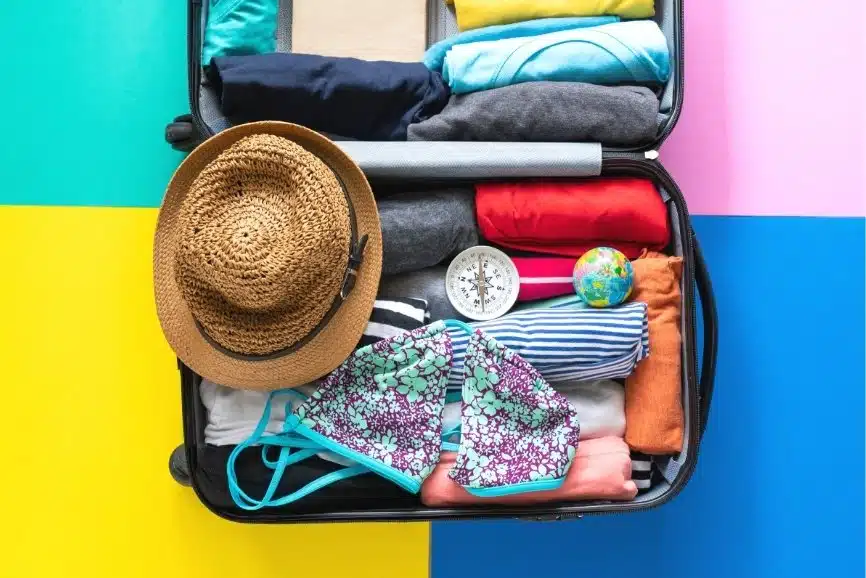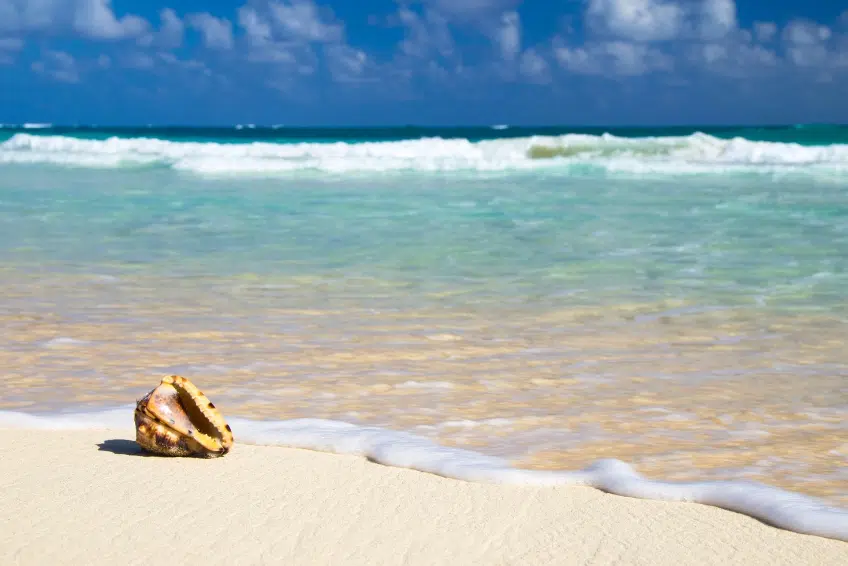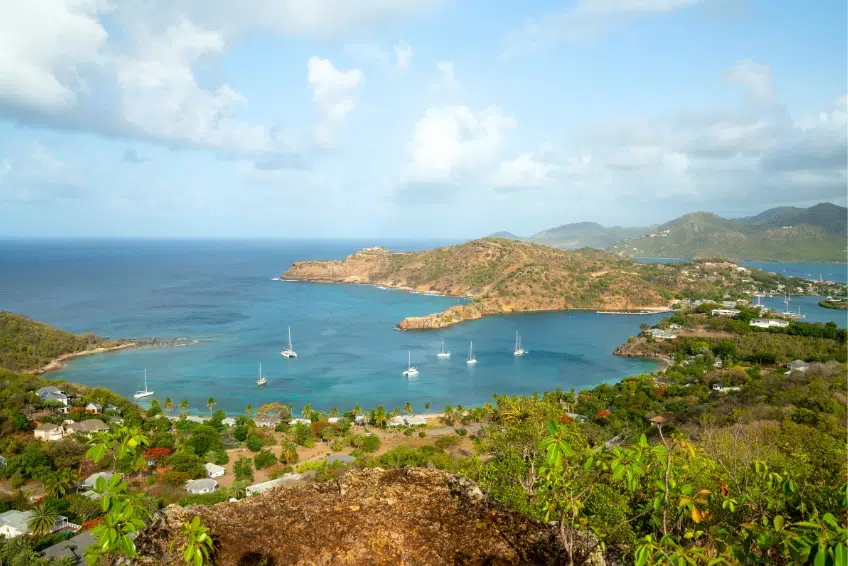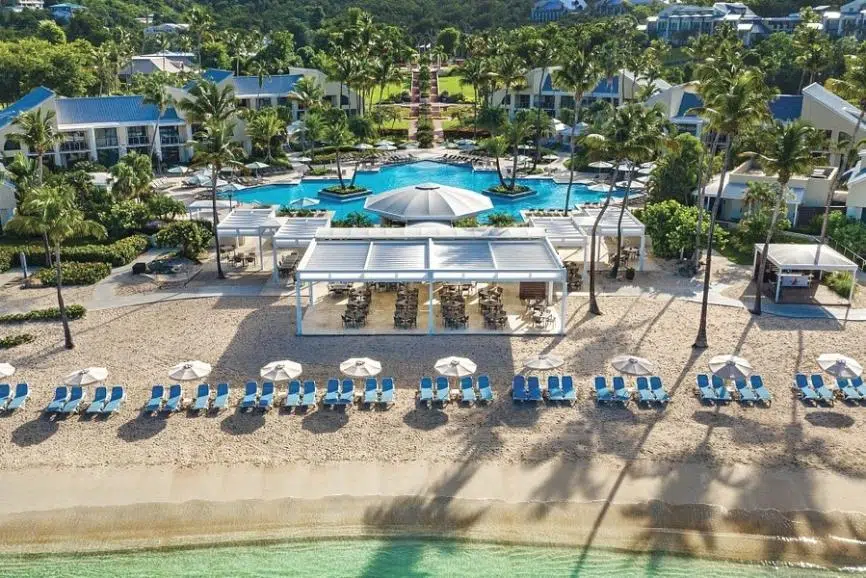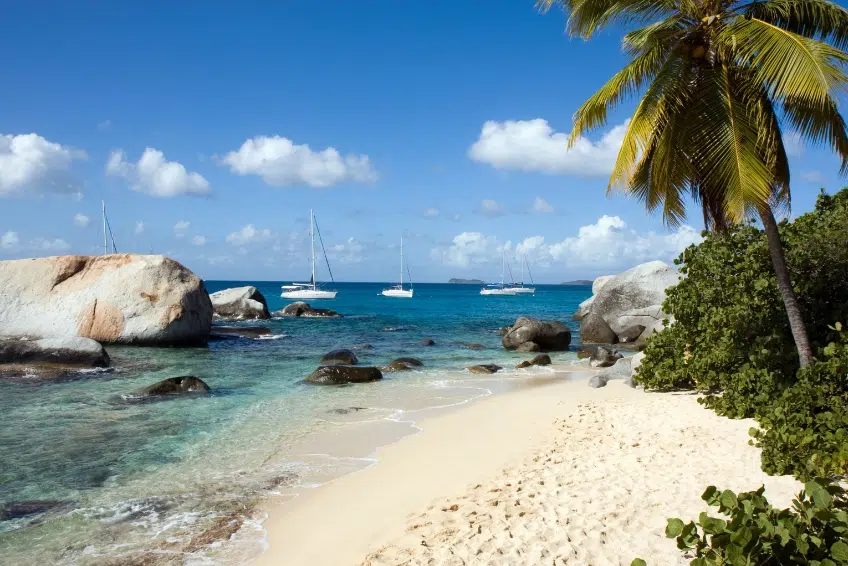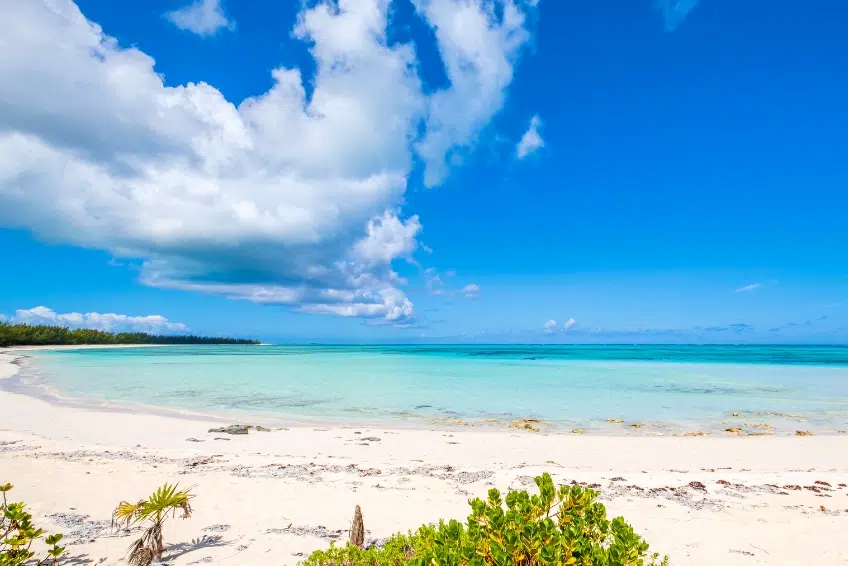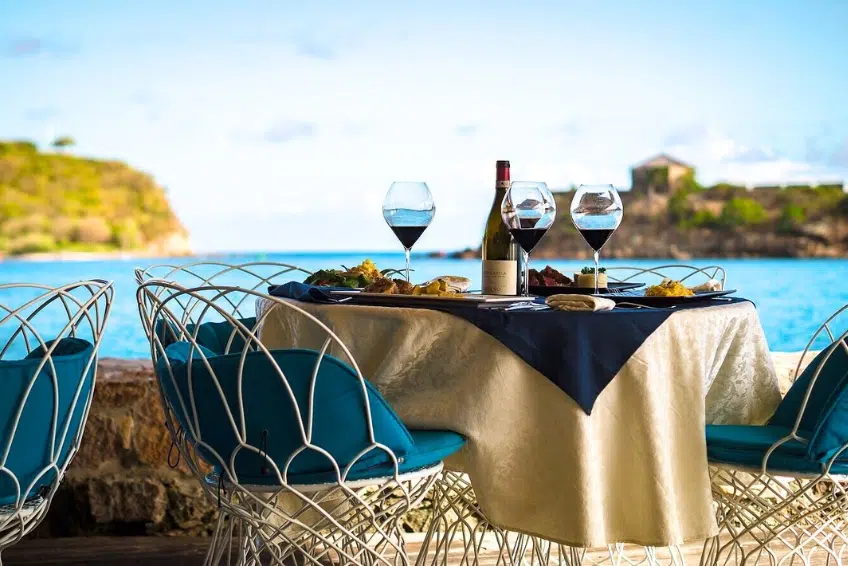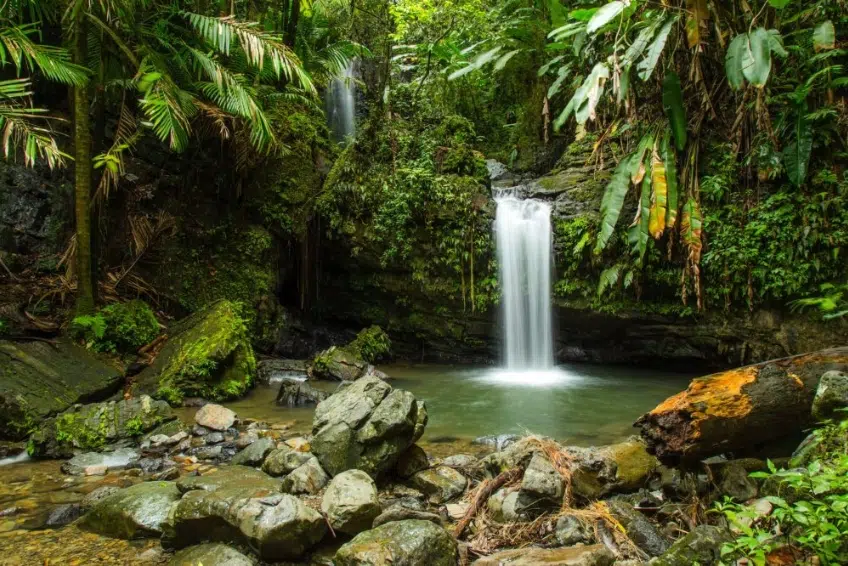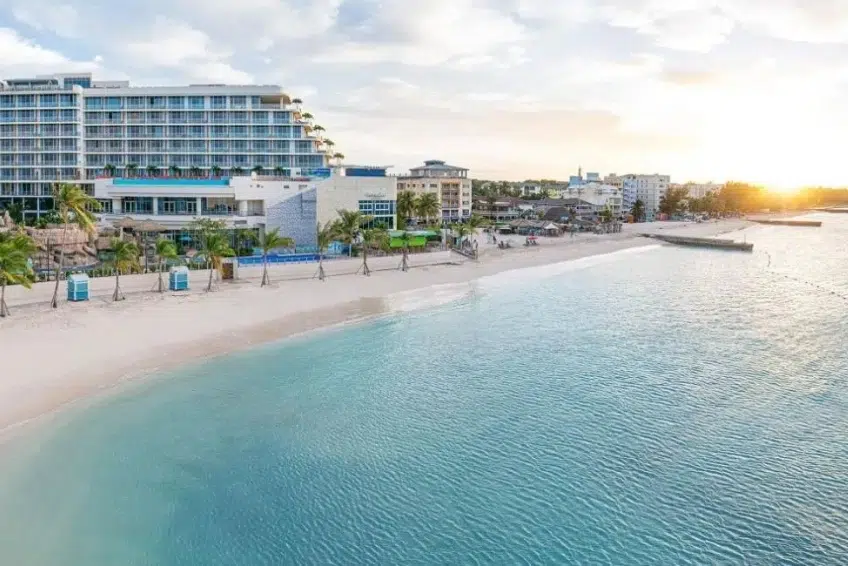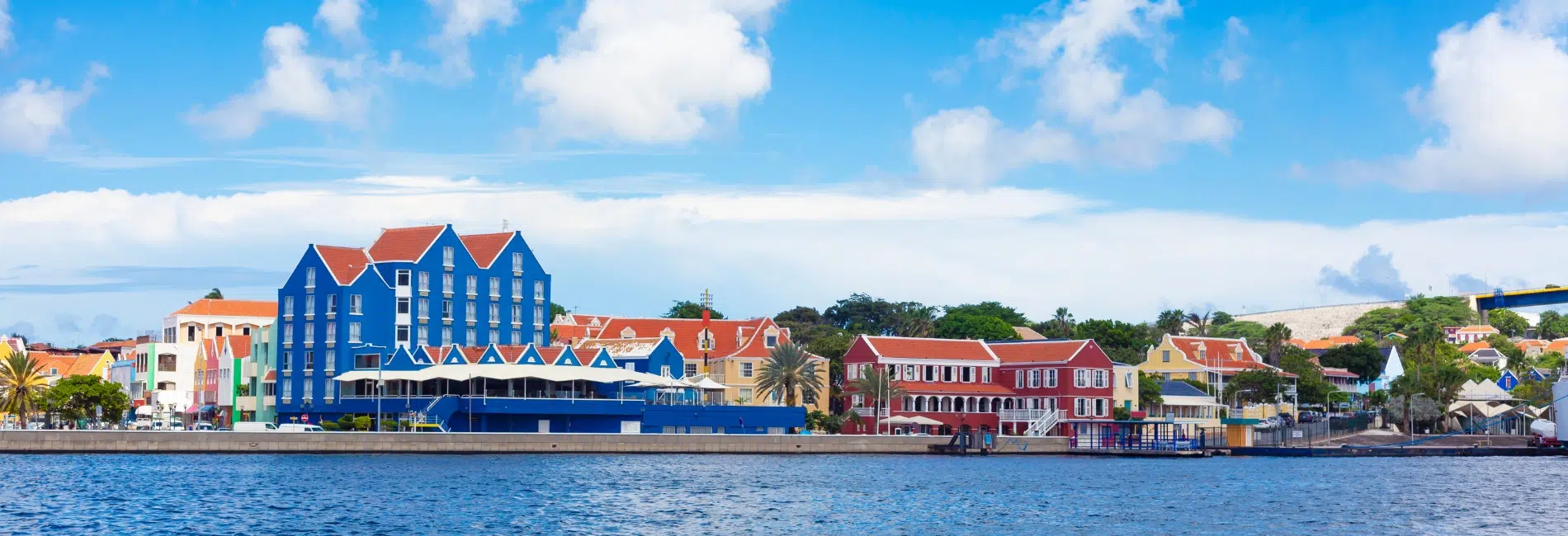
Curacao Visitors Guide
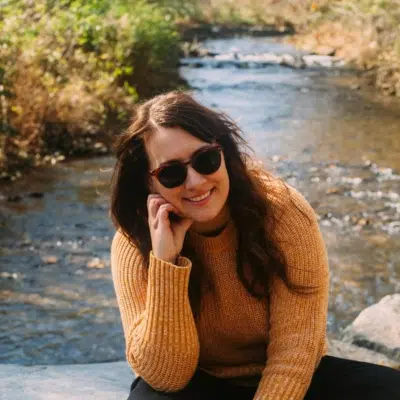 Vanessa Howard
Vanessa Howard
 Vanessa Howard
Vanessa Howard
Welcome to our Curacao Visitors Guide where you can discover the beautiful island of Curacao, part of the Dutch Caribbean. This island is fringed with over 40 beaches and ringed with coral reefs full of vibrant marine life. In Curacao you’ll find stunning rugged landscapes, historic settlements, and plenty of fun in the sun. With its delightful Dutch colonial architecture, thriving culinary scene, and exciting history, you’ll find that this island feels like a little piece of Europe in the Caribbean. Here is our guide to making your trip to Curacao the best it can be!
This article contains affiliate links. If you click on our links, we may earn a small commission at no extra cost to you. This helps us continue to offer free travel guides, but does not influence our recommendations in any way. Thanks for supporting independent travel content.
Contents
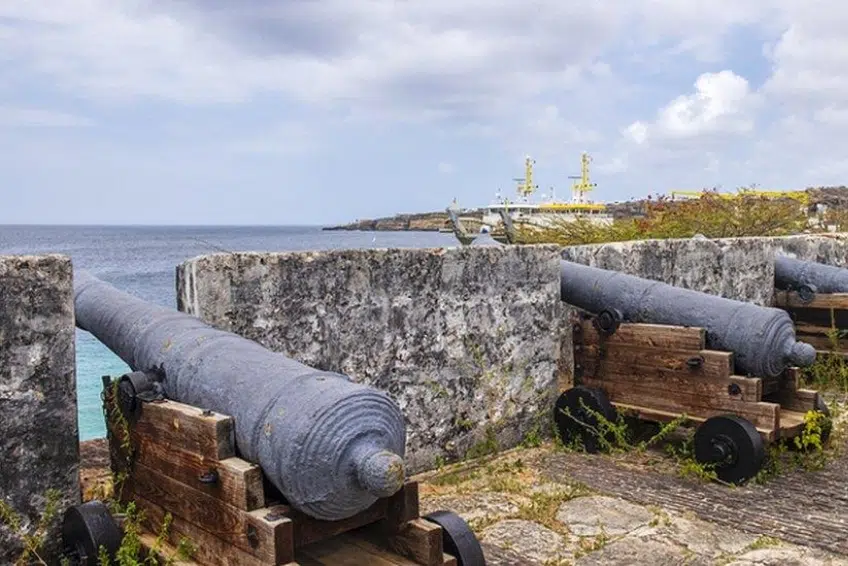
A Bit Of History
The island was originally settled by the Arawak people from the South American mainland, thanks to its close proximity to Venezuela. Curacao was not visited by Europeans until 1499. The island was settled by the Spanish, who deported the entire Indigenous population to Hispaniola as enslaved people by 1515.
Eventually, around 1662, the Dutch West India Company made Curacao the center of Atlantic trade. The island provided the Dutch with a unique advantage and was home to one of the finest natural harbors in the West Indies. Of course, the island was still subjected to frequent invasions by privateers and suffered greatly during the wars between the English and Dutch. Impressively, Curacao has remained continuously in Dutch hands since 1816.

Curacao Today
Today, Curacao is known for its stunningly beautiful beaches and as a haven for snorkelers and divers. The capital of Willemstad is a bustling city with idyllic, brightly colored Dutch architecture; its Old Town area is even a UNESCO World Heritage Site.
In Curacao, you’ll find the perfect mix of luxury accommodations, adventure, and vibrant city life that attracts travelers of all ages. Keep in mind that the official currency is the Netherlands Antillean Guilder.

Is Curacao Safe?
Curacao is considered one of the safest places to visit in the Caribbean’s Lesser Antilles. The island’s small size means there is very little crime, though petty theft can occur. We recommend keeping your valuables safe at the beach and other tourist destinations.
How To Get To Curacao
Once you reach the island, getting around Curacao is a breeze!
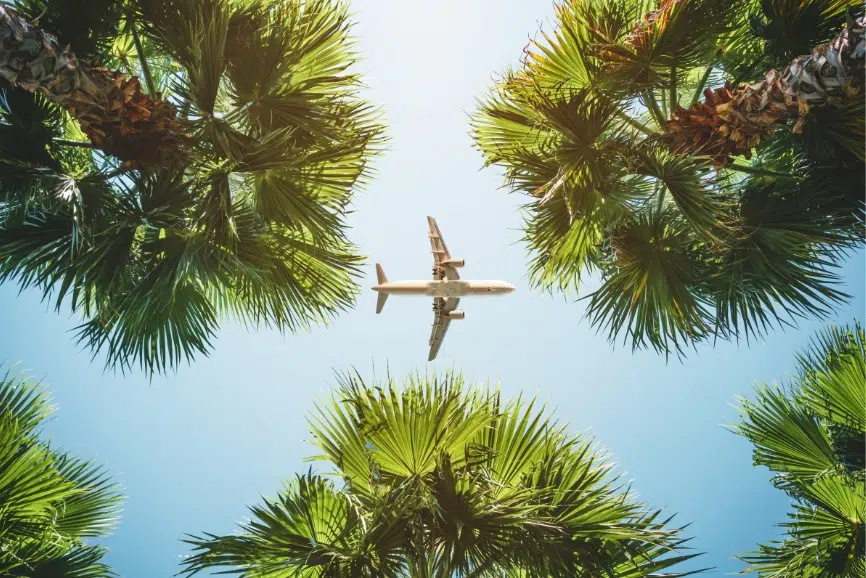
Arrival by Air
Traveling to the island by air is easy, with daily flights from Europe, North America, and South America to Curacao International Airport (CUR). From North America you’ll have your choice of American Airlines, United, Delta, Jetblue, and more. The most popular European option is, of course, the Dutch airline KLM Royal Dutch Airlines.
Before arriving, make sure to fill out your Embarkation-Disembarkation (ED) Card and know what you can bring with you through customs. These are similar to customs restrictions around the world.
Search for great deals on flights here.

Arrival By Cruise
There is a large cruise ship dock in the capital city of Willemstad called the Curacao Cruise Port. You won’t find a shortage of cruise lines that dock here, including favorites such as Carnival, Royal Caribbean, and Norwegian Cruises. The port’s cruise ship docks are very walkable, and plenty of attractions are easy to walk to from the terminals.
The port facilities at Curacao Cruise Port include ATMs, currency exchanges, and port guides on site. There are also plenty of taxi stands available right outside the port.
Search for great deals on cruises here.
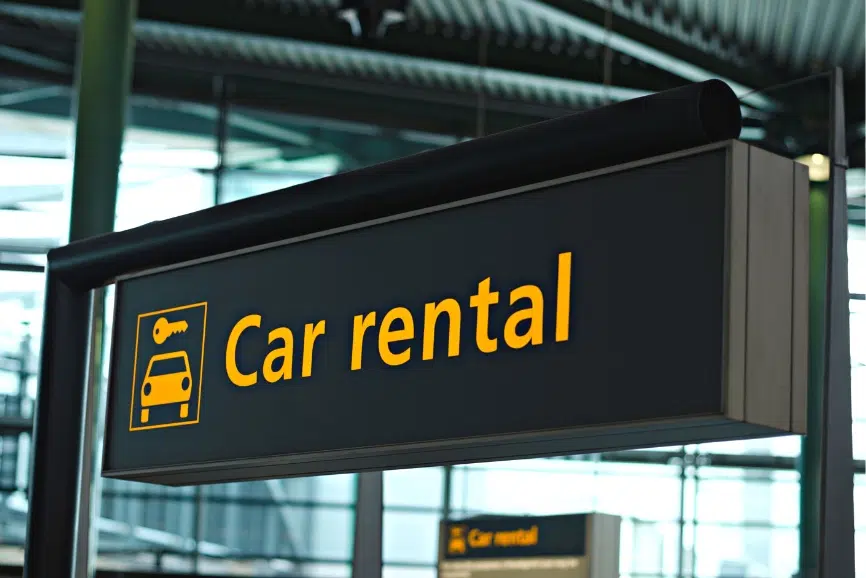
Rental Cars In Curacao
Renting a car in Curacao is an excellent idea if you plan to explore outside major urban areas such as Willemstad. Car rentals on the island can be expensive, so we recommend shopping around.
Remember, if you are trying to travel on a budget, you don’t have to keep your rental car for your entire stay in Curacao. You’ll find plenty of rental options at the airport, including Budget, Alamo, Hertz, Avis, and Thrifty. There are also great rental car options on the eastern end of Curacao near the cruise ship port.
Rates for rental cars vary by company and season, but you should expect to pay somewhere between $55 and $89 per day. You’ll also need a valid driver’s license to rent a car on the island.
Search for great deals on rental cars here.
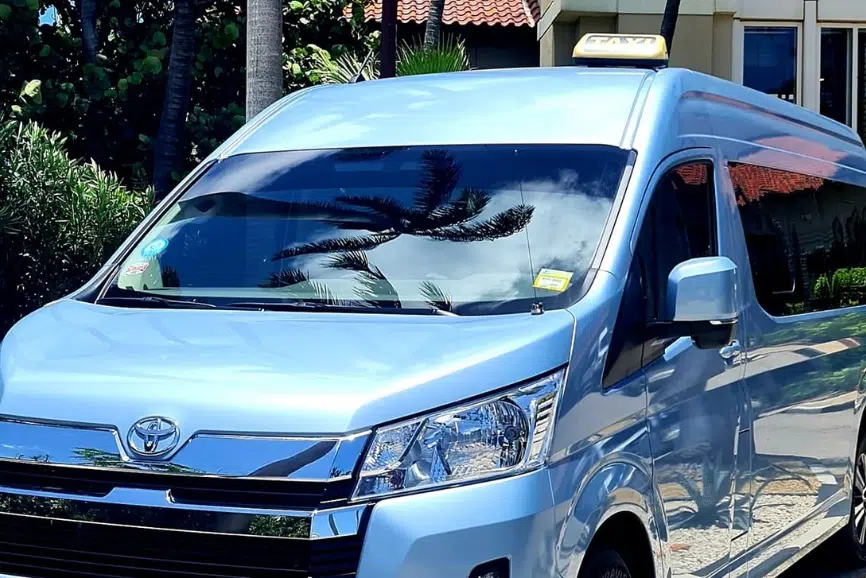
Taxis In Curacao
Taxis are an ideal option for short trips around vibrant Willemstad, but longer journeys and island tours are costly. Curacao’s taxis are not metered. Instead, drivers have rate sheets available for different destinations, although not every driver follows the rules. For this reason, it’s best to agree on a fare before you enter the cab.
For example, a cab ride to the northwestern side of Curacao can cost you between $80 to $100 USD. Early morning (before 7 am) or late evening (after 11 pm), cab fares will increase the rate by 25%. This is also the case if you have more than 4 passengers in your cab. Keep in mind that taxi drivers in Curacao expect a 10% tip.

Buses In Curacao
Public transportation is limited in Curacao. You’ll find large “Konvooi” or Convoy buses around Willemstad, with additional stations in Punda and Otrobanda. However, buses only run once an hour on weekdays and less often on weekends.
Buses can also shuttle you to the westward side of the island, but service along these routes is infrequent. One-way fares vary but generally cost around 2 guilders or about $1.11 USD.
There are smaller “buses,” nine-person vans labeled as the “BUS,” that run more frequently than the convoys, but they have no set schedule.
Things To Do In Curacao
Curacao's Top Highlights
You won’t find the stunning island of Curacao lacking in things to do! Whether you want to relax on a beach or have an adventure exploring caves, this idyllic Caribbean island has it all.
1. Stroll The Streets Of Willemstad
The capital city of Willemstad, Curacao, is a vibrant melting pot of cultures ready for you to explore. A UNESCO World Heritage Site, Willemstad features beautiful Dutch architecture, stunning waterways, tropical scenery, and a buzzing culinary scene. The city is named after Dutch governor Willem II van Oranje, and original historical buildings from both the 17th and 18th centuries remain today. You’ll find trendy sidewalk cafes and waterways reminiscent of those in Amsterdam.
Check out the Pietermaai and Punda areas for fantastic restaurants, galleries, and unique shops. While in Punda, stroll Handelskade, a Colonial Dutch row of buildings painted in bright pinks, oranges, and blues. Check out Old Market during your visit and try delicious local specialties like goat stew.
Don’t want to explore alone? Check out this top-rated Curacao Highlights Scenic, History and Cultural Tour.
For a fun way to experience the city, take a Tuk Tuk Tour of Willemstad.
ISLAND LIFE TRAVEL TIP : GET TRAVEL INSURANCE
Travel Insurance is a must in our opinion. Standard health insurance likely doesn’t cover you while outside of the country so travel insurance will cover any emergency medical needs as well as trip cancellation, lost or stolen luggage (it happens), flight delays, missed connections and more. You can easily compare the top-rated travel insurance plans here.
2. Watch The Sway Of Queen Emma Pontoon Bridge
Queen Emma Pontoon Bridge in lively Willemstad was built in 1888 to connect the Otrobanda and Punda neighborhoods. Known as “Our Swinging Old Lady,” the bridge is supported by 2 motors and 16 pontoon boats. It’s pedestrian-only, so make sure to listen for the siren; once you hear it, watch as the entrance gates close and the bridge begins to sway to accommodate passing ships. This allows boats to come and go out of St. Anna Bay easily. Try to catch the bridge while it’s swinging!
3. Enjoy The Pristine Beaches
Curacao is known for its pristine white sand beaches and clear turquoise waters. Each of the 44 beaches on the island has a distinct look and feel; however, the signature “cove” shape makes Curacao’s beaches unique. You’ll find rugged limestone cliffs that create a sense of seclusion and serve as a beautiful contrast to the radiant white sand beaches and calm turquoise waters.
Mambo Beach, often known as “Sea Aquarium Beach,” is a lively, sparkling shoreline with water sports, fantastic restaurants, unique shopping, and fun bars. If you’re looking for the island’s beach parties and nightlife, head to Mambo Beach.
If you want a more serene and local experience, head to Grote Knip. This beach stands out for its vivid neon turquoise waters, reminiscent of the famous Blue Curacao liqueur. You’ll find the beach nestled between rugged cliffs; this small cove is a local favorite due to its pristine setting. The cliffs surrounding the beach provide a natural barrier that calms the waters. A friendly local pig family mingles with beachgoers among the comfortable beach loungers. Enjoy the natural beauty, cliff jumping and snorkeling at Grote Knip.
The white sand of Cas Abao Beach is a favorite among locals and travelers. Surrounded by beautiful cliffs and lush tropical greenery and shaded by thatched palapas, you can relax on this stunning beach. While snorkeling the calm turquoise waters, watch for colorful tropical fish, sea turtles, and spotted eagle rays.
4. Explore The Hato Caves
You would never expect that 300,000-year-old limestone caves are walkable from the Curacao International Airport, but they are! The Hato Caves once acted as a hiding spot for enslaved people who had escaped and would take solace in the cave system for weeks or even months. To enter the cave, you’ll climb up around 49 steps to reach the stunning panoramic terrace.
Take a 45-minute guided tour to see the stalactites, stalagmites, and the bat colony. You can marvel at cave drawings by the Arawaks, which date back over 1,500 years. Take the Indian Trail, which allows you to enjoy Curacao’s beautiful nature and wildlife. Keep an eye out for carvings done by the Caiquetio Indians.
The Hato Caves are open 7 days a week from 9 am to 3 pm, with the last tour departing at 3 pm. You’ll only need to make a reservation in advance if you have a group larger than 8 people. It costs around $10 USD for adults and $8 USD per child ages 4-12.
Check out this top-rated Hato Caves, Turtles & Beach Tour, where you’ll start your day at the caves, followed by visiting a small fishing village and snorkeling with sea turtles.
5. Take A Hike In Christoffel National Park
To see the true natural beauty of Curacao, hit the trails around the largest National Park on the island, Christoffel National Park. Spanning around 2,300 acres, the park was once home to several plantations, including Savonet, Zorgvlied, and Zeevenbergen plantations. There are many scenic coastal and mountain trails for every skill level, including a challenging hike to the summit of Christoffel Mountain. Try to visit the Savonet Museum to learn more about the history of slavery and plantation life in Curacao.
While exploring, you’ll see cacti, iguana, rabbit, deer, and stunning rare plant life, like wild orchids. You’ll want to wear comfortable shoes and bring plenty of water, snacks, and sunscreen. Don’t be discouraged by the rugged terrain; trust us, the view from the top is worth the climb!
If you’ve got a rental car, you can also check out the 2 scenic drives to see the park’s stunning beauty and view the wildlife. Christoffel National Park and the Savonet Museum are open daily from 6 am – 2 pm. It costs around $15 per adult, $2 for children 6-12, and free for children under 5.
Check out this Christoffel National Park Jeep Safari, a 7-hour safari that allows you to immerse yourself fully in the park.
6. Snorkel Or Scuba Dive
A truly unforgettable snorkeling or scuba diving experience awaits you in Curacao. The fantastic beaches on the island are home to vibrant marine life and thriving coral reefs, which makes it the perfect snorkeling and scuba diving destination. After all, Curacao is known for its wonders and exciting underwater world.
You can dive into the mushroom forest teeming with marine life, including sea turtles, parrotfish, and porcupine fish. The base of the coral here has been eroded by fish, waves, and sponges over time. This creates the appearance of gigantic mushrooms growing on the ocean floor.
Nestled in a beautiful cove along the island’s west coast, you’ll discover Playa Lagun. The calm waters of the cove are the perfect place to snorkel. Visit early in the morning for a greater chance to swim with the green turtles.
Are you interested in diving into a shipwreck? Check out the Tugboat, a shipwreck that sank over 30 years ago in Curacao. Vibrant corals and tube sponges have made the surface of the Tugboat their home. The Tugboat shipwreck is about 5 meters below the surface, so snorkelers and scuba divers can easily explore.
There are many unique Scuba Diving Tours in Curacao, including this top-rated Discover Diving in Curacao, and this Curacao Guided Underwater Walking Tour.
Check out these fantastic Curacao Snorkeling Tours, including this award-winning Swimming with Sea Turtles and Grote Knip Beach Tour.
Or take a look at this fun Curacao Seabob Tour.
7. Discover Shete Boka National Park
Shete Boka National Park covers around 6 miles of Curacao’s rocky northern coast. The name means “7 inlets”, and you’ll find 10 stunning and secluded beaches. The animals only add to the spectacular scenery, and if you visit at the right time, you’ll be rewarded with the sight of iguanas, along with 3 species of sea turtles that nest there.
While visiting Shete Boka National Park, explore Boka Tabla, the popular inlet. Known for its deep underground cave, Boka Tabla also has a secret blowhole located near Westpunt. Keep in mind the only way to get there is by off-roading.
Shete Boka National Park is open daily from 9 am to 5 pm and costs $15 per person and $2 per child ages 6-12 years old.
Check out the Breath of Curacao Safari, where you’ll explore the best of Shete Boka National Park.
8. Check Out The Kura Hulanda Museum
The Kura Hulanda Museum is in the home of a 19th-century merchant and offers an anthropological look into the predominant cultures of Curacao. You’ll find exhibits featuring 18th-century artifacts and scale models of the West African Empires, African slave trade, Mesopotamian relics, and Antillean art.
The museum is open Monday through Saturday from 8 am to 4 pm and Sunday from 9 am to 2 pm. It costs $21 USD per adult and $7 USD per child from 6 to 12 years old.
Check out these Skip the Line: Museum Kurá Hulanda Admission Ticket.
9. Visit Fort Amsterdam
Constructed by the Dutch West Indies Company between 1635 and 1636, Fort Amsterdam is the oldest fort in Curacao. This UNESCO World Heritage Site was once the island’s most important fortification and functioned as the regional headquarters of the Dutch West Indies Company. Fort Amsterdam is one of eight forts spread across the island.
Today, Fort Amsterdam is home to the governor’s house, several government offices, and Fort Kirche, the oldest church in Curacao. The fort is open Monday – Friday from 10.00 am – 1.30 pm and is free to visit.
10. Kayak The Curacao Coast
There are several incredible places that you can kayak in Curacao. Take a leisurely guided paddle through Curacao’s Caracas Bay, which brings you to secluded beaches and historic landmarks, such as Fort Beekenburg.
Or you can kayak among the Mangrove Forests at Spanish Water Bay. The area is a sheltered bay ideal for beginners, thanks to its calm waters. Paddling through the mangrove forests, you’ll observe a world of ecological wonders. The mangroves are not just beautiful but a vital part of Curacao’s ecosystem. They act as nurseries for marine life and birds.
Those looking for a bit more of a challenge can take a trip to Tugboat Beach, where a famous shipwreck lies just 5 meters below the surface. The clear waters make it an excellent spot for both kayaking and snorkeling. After paddling, you can snorkel around the tugboat shipwreck to further explore the vibrant coral reefs teeming with fish.
Check out this Curacao Kayak and Snorkel Adventure, where you’ll explore Curacao’s Caracas Bay.
11. Enjoy Carnival In Curacao
You can experience the Caribbean’s most colorful celebration in Curacao! The island comes alive with dazzling costumes, spectacular parades, and infectious Caribbean rhythms. The Carnival celebration is held annually in Willemstad and showcases the rich cultural heritage of Curacao. You’ll be able to experience traditional music, energetic street parties, and dancing.
Carnival runs from mid-February through the beginning of March. Carnival offers an unforgettable cultural experience, from the thrilling Tumba Festival to the Grand Parade. It’s something you’ll never forget!
12. Try Some Curacao Liqueur
While you are in Curacao, make sure to visit the Curacao Liqueur Distillery at Landhuis Chobolobo. Take a guided tour through the distillery and be fully immersed in the distillation process of how the world-famous Blue Curacao Liqueur is made. You’ll also get to taste the famous liquor in many flavors at the end of the tour. If you want to spend more time at the distillery, you can opt for a cocktail class to learn how to make your own famous curacao cocktail.
The Curacao Liqueur Distillery is open Monday through Friday from 8 am to 5 pm. There are several tours, including a standard guided tour for $18 USD, a deluxe guided tour for $28, and the Chobolobo Cocktail Workshop for $48 USD.
More
CARIBBEAN
Islands, Beaches, Cuisine and More
Curacao Hotel Guide
Curacao’s idyllic shores attract travelers from around the world. Whether you’re searching for a secluded couples’ retreat, a fun family hotel, or a fantastic all inclusive resort, you’ll find it on this blissful island. This guide will help you find the perfect hotel for you!
Cayman Islands Beaches Guide
The Cayman Islands has some of the best beaches in the Caribbean Sea. From snorkeling to relaxation to swimming, the Cayman Islands has it all. Here are the 10 best Cayman Islands beaches to check out on your visit!
Antigua Visitors Guide
The island of Antigua holds a special place in our hearts. It’s a place where one can access luxurious amenities and STILL find numerous places to get away from it all! Here is some basic info to get you started and many of the best things to do in Antigua.
U.S. Virgin Islands Hotel Guide
The three islands that make up the US Virgin Islands may be small but they are mighty. Each one has its own personality and special traits that make it unique and worth a visit. In our US Virgin Islands Hotel Guide we explore the best hotels in the US Virgin Islands.
St. Lucia Visitors Guide
Nestled in the Lower Antilles is the beautiful green Caribbean island of St. Lucia. Famous for its towering Pitons, St. Lucia is home to jungles, pristine beaches, endless activities and more. Here is our guide to the best of St. Lucia.
U.S. Virgin Islands Visitors Guide
Looking for a Caribbean destination that offers the perfect blend of natural beauty, adventure, and relaxation? Look no further than the U.S. Virgin Islands! Here is our guide to the best of the USVI.
U.S. Virgin Islands Restaurant Guide
From little St. John to bustling St. Thomas and on down to St. Croix, the options for restaurants and dining are plentiful in the US Virgin Islands. Here is our guide to the best restaurants in St. John, the best restaurants in St. Thomas and the best restaurants in St. Croix.
Turks And Caicos Visitors Guide
Welcome to Turks and Caicos, an archipelago of 40 islands and cays in the heart of the Caribbean Sea. With stunning turquoise waters, pristine beaches, and a laid-back island vibe, it’s the perfect destination for a tropical getaway. Here is our guide to the best of Turks & Caicos.
Antigua Restaurant Guide
Welcome to beautiful Antigua! This stunning Caribbean Island has been a favorite of holidaymakers from around the world for years, with its relaxed culture and gorgeous seafood just two of the biggest draws for travelers looking to embrace the slower side of life.
El Yunque National Forest Guide
El Yunque National Forest is a national treasure in Puerto Rico and the only tropical rainforest in the United States National Forest system. Here is out guide for everything you need to know to have an adventure filled trip to El Yunque National Forest.
The Best Caribbean All Inclusive Resorts
Choosing the best Caribbean all inclusive resort for your needs can be challenging. In this article, we’ll tell you our top choices in each country and help you plan the most fantastic holiday imaginable.
Bahamas Hotel Guide
The Bahamas are a beautiful stretch of islands in the northern Caribbean. With white sand beaches, turquoise water and numerous islands to choose from, there's something for everyone. Here are some of the best hotels in the Bahamas.

